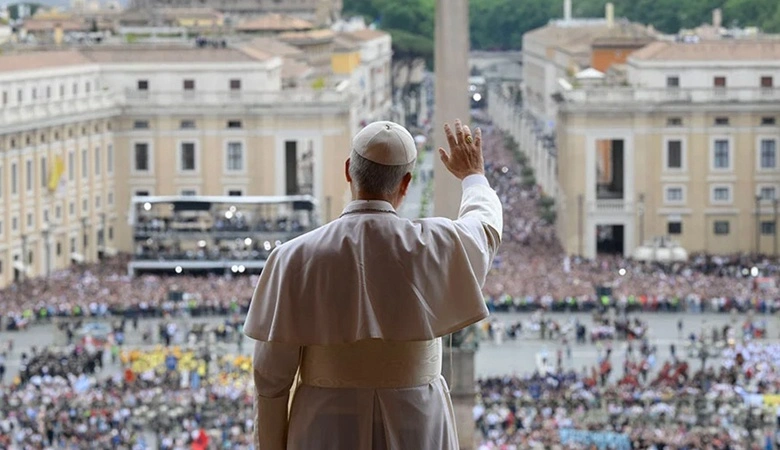A Leader in a Time of Turmoil
The timing of this papal transition could not be more symbolic. The world today is marked by fragmentation and fatigue. Trust in institutions is fraying, social divisions are deepening, and many people are questioning the relevance of religion itself. Against this backdrop, the new Pope steps onto the world stage not as a political figure, but as a spiritual shepherd. His voice, his choices, and his vision carry the potential to unite across divides—and to offer a new model of leadership rooted in humility and service.

The Power of First Impressions
The world watched closely as the new Pope addressed the crowds for the first time. His demeanor—gentle, sincere, and understated—immediately set him apart. He spoke not from a place of power, but from a posture of prayer and presence. Even in those early moments, it was clear that this papacy would not be about grand declarations, but about genuine connection. His words pointed not to doctrine, but to humanity. In a world weary of spectacle, this quiet authenticity was powerful.
Reclaiming the Church’s Moral Voice
One of the new Pope’s most pressing challenges is to restore credibility and relevance to the Catholic Church. Decades of scandal and internal conflict have distanced many from its mission. But the Pope’s early focus on integrity, justice, and compassion suggests a willingness to confront the Church’s past while guiding it toward a more transparent and inclusive future. He seems to understand that spiritual authority must be earned not through power, but through trust and example.
A Global Pope for a Global Age
While the Pope leads the Roman Catholic Church, his influence extends far beyond its borders. In an interconnected world, spiritual leadership has the potential to reach across faiths, cultures, and nations. This Pope’s message of peace, human dignity, and environmental stewardship speaks to global concerns that transcend religion. His papacy could serve as a rare force of moral unity in an age of polarization.

Hope Rooted in Compassion
Perhaps the most defining feature of the new Pope’s leadership is his deep compassion. Rather than offering rigid answers, he speaks to people’s struggles—with tenderness and understanding. He visits the sick, prays with refugees, and embraces those on society’s margins. His actions reflect a leadership style that is pastoral rather than political, spiritual rather than strategic. In a time when many feel unseen, this kind of presence is not just hopeful—it’s healing.
Dialogue Over Division
Instead of deepening lines between belief systems, the new Pope has already signaled an openness to dialogue. He has extended hands to leaders of other faiths, opened doors to conversations on divisive social issues, and encouraged open listening within the Church itself. His approach suggests that unity need not mean uniformity—and that the Church can be a home for many voices, not just a few.
A Sign of What’s Possible
The new papacy is not a magic solution to the world’s problems. But it is a sign of what is possible. In an era where leadership is often defined by power struggles, the Pope offers a different path—one shaped by humility, compassion, and purpose. His presence reminds the world that faith still has a role to play, not by dominating, but by healing.
Conclusion
The dawn of this new papacy is more than a ceremonial event—it is a spiritual moment for reflection, renewal, and reconnection. It invites the Church to remember its roots and the world to imagine a future where leadership looks more like service than status. Whether or not this Pope can meet every expectation, he has already offered something rare: hope with a human face. And in times like these, that may be exactly what the world needs.

